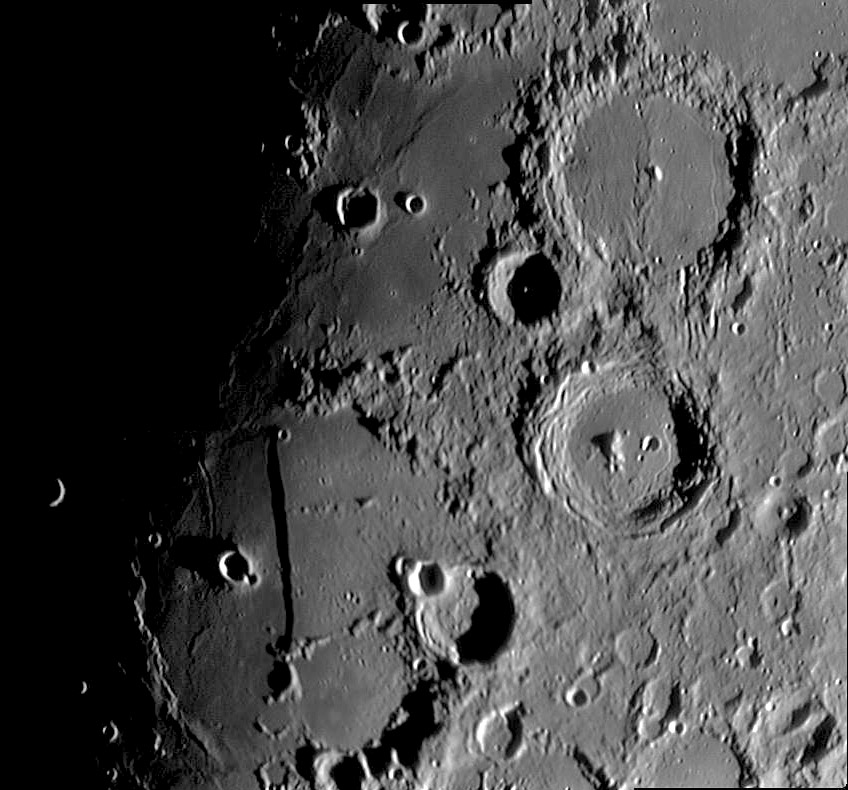
image by Rik Hill, Tucson, Arizona
Rik Hill is just beginning his career as a successful lunar imager and this part of one of his mosaics shows the well-known features of the Straight Wall and the craters Arzachel and Alphonsus. But there are a number of other features here that attract my attention. The bright dot of the central peak of Alpetragius is reminescent of Icarus’ tall peak, and the bright arc (the rim of Nicollet) beyond the terminator is the sort of beacon of coming dawn that is always a treat to observe. Three ridges at the top left of the image remind me of three waves of lava breaking on the shore. Immediately south is Lassell, nearly completely filled with ink, I mean shadow. Notice to the north of Lassell there is a roughly circular patch of textured material that appears to be superposed on the mare ridge and this piece of Mare Nubium. This doesn’t show up on the Lunar Orbiter or Clementine images, both having too high a Sun angle. This appears to be a lava of a different morphology than typical mare lavas, and in fact is right next to the Lassell K, G, C area which is a famous “red spot” and likely to be a different composition of volcanism. I don’t think I have seen this rough textured lava mass before. Slide south along the terminator to the Straight Wall. To its left is the Birt rille, which this extremely low lighting suggests may have a raised edge (it casts a shadow to the west). A diagonal ridge is just west of the rille. On higher Sun views this looks like a small mare ridge, but Rik’s image indicates that it may have a narrow depression in front of it. And notice the north-south crease to the southwest of Birt. The area around the crease is rougher textured than other mare material nearby suggesting some difference in age or perhaps composition. All pretty interesting for one mosaic!
Technical Details:
Jan 27, 2007. Celestron 14 at prime focus with a ToUCam ProII + IR filter, 300/1500 images in 8/10 seeing. Processed with Registax 4, GIMP and iMerge.
Related Links:
Rükl plates 43, 44, 54 & 55
Rik’s observatory
Yesterday's LPOD: A Really Tall Peak
Tomorrow's LPOD: Why Not?
COMMENTS?
Register, Log in, and join in the comments.



